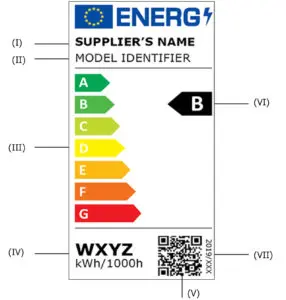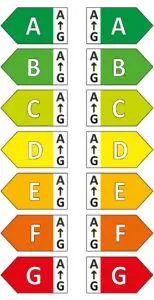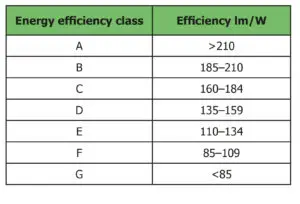The purpose of the EU energy labelling is to help compare the energy consumption of electrical appliances and at the same time to encourage industry to develop less energy-consuming products. The energy label of appliances indicates to which category each appliance belongs based on its energy efficiency.
Energy labelling is currently being renewed in accordance with Regulation (EU) 2019/2015.
As manufacturers continued to innovate and develop more and more energy efficient products and the difference between classes A++ and A+++ was less obvious to consumers, it became clear that the energy labels needed a simpler scaling system. The new system will now remove the classes A+ and A+++ and reintroduce a simpler classification, using only the letters from A to G.
The transition to the new classification will be gradual. From 1 March 2021, the new version of energy label is applicable in all shops and online retailers for four product categories – fridges and freezers, dishwashers, washing machines and television sets. New labels for light bulbs and lamps with fixed light sources will follow on 1 September, and other products will follow in the coming years.
New Energy Label
This is how the new energy label looks like.
How to interpret:
I. Supplier’s name or trademark
II. Supplier’s model identifier
III. Scale of energy efficiency classes from A to G
IV. The energy consumption, expressed in kWh of electricity consumption per 1000 hours, of the light source mode in on-mode.
V. QR-code
VI. The energy efficiency class
VII. The number of Regulation
Small label (colored or black and white) can be provided in visual advertisements and technical promotional materials.
New energy label for lighting products
For lighting products, the new labels must be introduced on 1 September 2021. However, products with an old energy label may still be sold for 18 months after that date.
New labelling pertains to light sources, which includes lamps, modules and luminaries perceived as a light source (with fixed light source).
New energy efficiency class will be based on more easily readable lm/W -efficiency instead of old Energy Efficient Index. Energy classes will be rescaled totally. For example, nowadays best A++ would be categorized to E class and A+ to worst G class.
At the same time, with ever-tighter energy efficiency requirements, it seems that some old commonly used technologies – halogen lamps and traditional fluorescent lighting (T8) will be phased out starting 1 September 2023. T5 fluorescent tubes and compact fluorescent lamps remain on the EU market for the time being.
The EU’s Ecodesign aims to set requirements for energy-using products that improve their energy efficiency and reduce their other environmental impacts. Ecodesign rules are mandatory, with a few exceptions, for all lamps sold in the EU.






